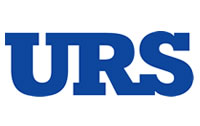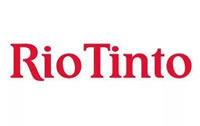Do You Have Effective Meetings?
During Meetings Are You Talking Too Much?
Can You Talk Less?
This article is part of Plant Services Magazine’s monthly Human Capital column. Read more from Tom Moriarty.
Published July 31, 2020
Buy a signed copy of Tom’s Book, The Productive Leadership System; Maximizing Organizational Reliability
Senior management needs to strike a balance between providing structure and stability, and promoting an environment where their team members can vocalize suggestions for improvement. Showing this kind of respect is motivating and keeps team members involved while providing opportunities to grow and expand their capabilities. It’s especially true if you want to have effective meetings.
During meetings leaders can send a strong message regarding this balance. In a typical team meeting, time is set aside for reporting the status of current activities, for discussing new issues, and for planning future activities. Leaders that are not concerned with getting the most from people tend to drive the conversation. They state the issue that will be discussed, then proceed to give their own version of what should happen. Once they are done, these senior people either ask for the opinions of others in descending order of seniority or pick the one or two people whose opinions are most sought by leaders.
Make People Feel Comfortable
Team members don’t feel comfortable when senior leaders dominate conversations, or when they are aggressive, highly opinionated, or don’t give other ideas any respect. When people don’t feel comfortable speaking their mind, they tend to hold back. They give you what they feel they need to give you, but they don’t extend beyond that. People that are uncomfortable will not raise important questions, make you aware of potential problems, or bring up valuable improvements. In such cases, people will only offer safe and uninspiring ideas and solutions.
In meetings, the further down the “food chain” a person is, the more uncomfortable he or she is with sharing any views that diverge from senior management’s views. There are exceptions of course. Every organization has a handful of people that speak the ugly truth to power and are damn proud of it. The other 95% of people tend to keep from rocking the boat.
When a senior person has only one or two confidants, nobody else’s opinions matter. There is very little diversity of thought. It’s essentially a waste of everyone else’s time to even be in the meeting.
What Can You Do?
What can a leader do to reduce discomfort and improve the diversity of opinion and have more effective meetings? Obviously the first step is knowing if this is an issue. Be conscious of the body language of meeting participants. Pay attention to the amount of time you talk during the meeting. Notice who else is doing the talking. Are people attending the meeting, but not contributing thoughts?
Assuming you have recognized that you are talking too much, you can limit your time during the meeting. The book “Multipliers” outlines the idea of thinking about five poker chips in your possession. One chip is worth three minutes, three chips are worth one-and-a-half minutes, and the fifth chip is worth 30 seconds. You can play these chips when you see fit but limit yourself to these time slices. This concept helps senior leaders to think about if they truly need to interrupt the flow of the discussion.
Let someone else can run the meeting, leaving you free to listen. Make sure the important points are discussed, and that reasonable decisions are made. Give approval when appropriate, but don’t drive the discussion or decisions. Make sure everyone knows the scope, available resources, and timelines, and let the team come up with the solutions.
Another suggestion, when getting input from the meeting participants, start with the most junior team members. Let the line employees give their input before the supervisors do. Supervisors provide their input before managers and so forth. Why? It overtly demonstrates that you value their input and opinions. It’s a show of respect, and it’s motivating. Input is not filtered, not given by someone else who takes the credit. It also allows you to check on the alignment of the team. When junior people recommend actions aligned with your objectives and goals, it validates that the message has penetrated down through the organization.
These tactics work in formal meetings or impromptu group discussions. Pay attention to your own habits, and you’ll get more from your team and have more effective meetings.
Go forth and do great things.
Buy a signed copy of Tom’s Book, The Productive Leadership System; Maximizing Organizational Reliability
About the Author: Tom Moriarty
 The Productive Leadership System; Maximizing Organizational Reliability[email protected]www.linkedin.com/in/alidade-mer
The Productive Leadership System; Maximizing Organizational Reliability[email protected]www.linkedin.com/in/alidade-mer


















